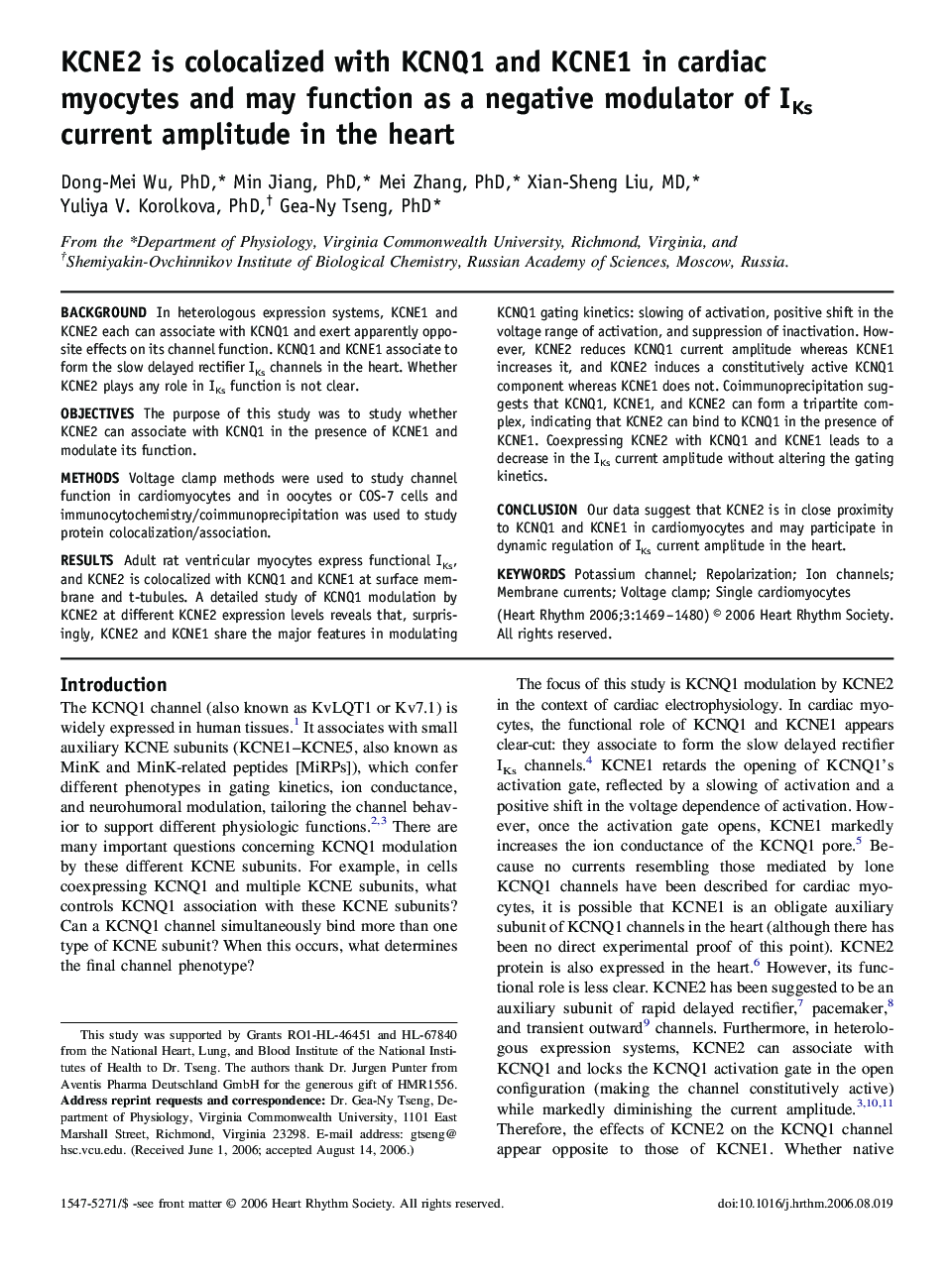| کد مقاله | کد نشریه | سال انتشار | مقاله انگلیسی | نسخه تمام متن |
|---|---|---|---|---|
| 2925242 | 1175936 | 2006 | 12 صفحه PDF | دانلود رایگان |

BackgroundIn heterologous expression systems, KCNE1 and KCNE2 each can associate with KCNQ1 and exert apparently opposite effects on its channel function. KCNQ1 and KCNE1 associate to form the slow delayed rectifier IKs channels in the heart. Whether KCNE2 plays any role in IKs function is not clear.ObjectivesThe purpose of this study was to study whether KCNE2 can associate with KCNQ1 in the presence of KCNE1 and modulate its function.MethodsVoltage clamp methods were used to study channel function in cardiomyocytes and in oocytes or COS-7 cells and immunocytochemistry/coimmunoprecipitation was used to study protein colocalization/association.ResultsAdult rat ventricular myocytes express functional IKs, and KCNE2 is colocalized with KCNQ1 and KCNE1 at surface membrane and t-tubules. A detailed study of KCNQ1 modulation by KCNE2 at different KCNE2 expression levels reveals that, surprisingly, KCNE2 and KCNE1 share the major features in modulating KCNQ1 gating kinetics: slowing of activation, positive shift in the voltage range of activation, and suppression of inactivation. However, KCNE2 reduces KCNQ1 current amplitude whereas KCNE1 increases it, and KCNE2 induces a constitutively active KCNQ1 component whereas KCNE1 does not. Coimmunoprecipitation suggests that KCNQ1, KCNE1, and KCNE2 can form a tripartite complex, indicating that KCNE2 can bind to KCNQ1 in the presence of KCNE1. Coexpressing KCNE2 with KCNQ1 and KCNE1 leads to a decrease in the IKs current amplitude without altering the gating kinetics.ConclusionOur data suggest that KCNE2 is in close proximity to KCNQ1 and KCNE1 in cardiomyocytes and may participate in dynamic regulation of IKs current amplitude in the heart.
Journal: Heart Rhythm - Volume 3, Issue 12, December 2006, Pages 1469–1480